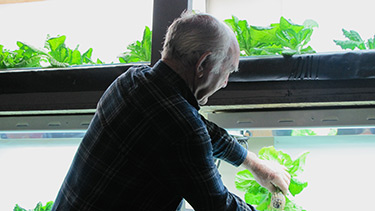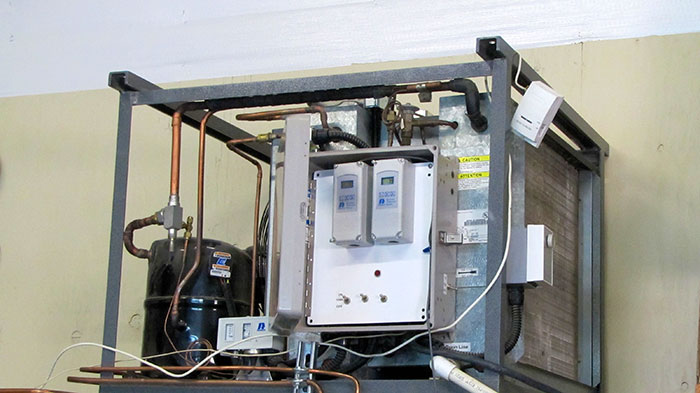One of the key strengths behind a sustainable aquaponics system—the growing of fish and plants together within a mutually supporting system—is the notion of increasing natural efficiencies. The fish waste is recycled through the roots of growing plants to provide the nutrients for the plants to properly grow, while the plants help filter the water for the fish. The waste water is filtered to remove the solid waste materials, and where there are no chemicals present (including from the use of any antibiotics for the fish), synthetic fertilizers, and other toxic pollutants added into the system, the filtered waste can be recycled onto lawns and other garden areas as natural fertilizer.

Curt Jungwirth, CEO of Eco Tech Fisheries, wants to increase these efficiencies even further.
Jungwirth, an inventor that holds several patents, hates solid state circuitry because he can’t repair them. But let him work with relay switches and standard circuits, he’s able to build almost anything, that he can see first in his mind.
That’s how he built his integrated heat exchanger that dramatically improves both energy and water usage efficiencies in aquaponic systems. By taking advantage of the natural laws of physics, his system taps the latent heat produced, 970 BTU’s per pound of water removed from the air, and redirects that heat back into the fish tanks, and the ambient air for his building. Jungwirth says that the typical aquaponics system requires between a 5% to 8% water change per day, while his averages about a 1% water change per week, due to the extra water added through the dehumidification process.

With a world population expected to substantially grow, the negative impacts of climate change upon agriculture production, the growing scarcity of freshwater sources, and the increasing costs of fossil fuel production— a low tech, sustainably designed aquaponics system for developing small and large-scale, local food production, may be just what the planet sorely needs.
Curt Jungwirth holds these thoughts in the back of his mind as he continues to tinker and invent with his ongoing design iterations, and to formulate his future plans, including for two on-site methane ingesters. Not only to be able to go off the electricity grid entirely, but to reuse the leftover organic matter from the digesters to grow enough worms to feed his fish.
With a mind brimming with practical ideas, Jungwirth adds after each, “one thing at a time”, as though to remind himself, it’s the tortoise, not the hare, who reaches the finish line.
Most of the videos featured on Cooking Up a Story were produced, filmed, and edited by Rebecca Gerendasy. Fred Gerendasy contributed as a writer to many of the posts and occasionally as the interviewer. Visit Rebecca Gerendasy Clay – Art and Fred Gerendasy Photography to see their current work.
